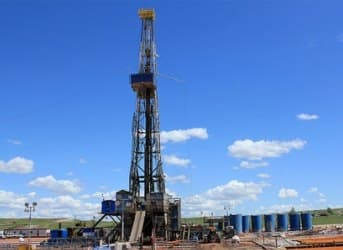Between 2008 and 2013, U.S. oil production surged by 64 percent. U.S. natural gas production increased by 42 percent between 2005 and 2013. Both increases were driven by the boom in shale oil and gas production.
The boom has led BP and Exxon executives to claim that the U.S. will be self-sufficient in energy within two decades. Energy economist Philip K. Verleger, Jr. argues that American energy independence will allow the country to become a net exporter of oil and gas and to enjoy a cost advantage in energy supplies over the rest of the world that will translate into serious economic benefits.
However, there are three major red flags that should curb this unconstrained enthusiasm: shale depletion rates, decreased oil and gas prices due to the glut, and the extent to which upstream oil and gas companies in the shale space are overleveraged.
Shale oil and gas wells have rapid decline and depletion rates. According to Pete Stark, a geologist and analyst at IHS, Inc., production from the average shale oil well declines by 50 to 78 percent after its first year, and by 50 to 75 percent after the first year for shale gas wells. The Serenity 1-3H oil well in Oklahoma, owned by Chesapeake Energy, produced over 1,200 b/d in 2009; in 2013, it produced less than 100 b/d. Continental Resources’ Robert Heuer 1-17R well in the Bakken fields saw production plunge 69 percent in its first year. In order to maintain the same level of output in the face of such drastic decline rates, upstream companies must constantly drill new wells.
For natural gas, increased supply has exerted downward pressure on prices. Lower prices have given the U.S. a cost advantage over other countries and allowed for decreased imports since 2007, but they also cut into the profit margins of upstream natural gas companies. This may push these companies to cut back on drilling, as in 2009.
Related Article: OPEC Questions Sustainability Of North American Oil Boom
In the case of oil, the shale boom has helped stop prices from soaring in a hectic geopolitical environment. American supplies, in effect, have offset insufficient production from Libya, Nigeria, Venezuela, and other major producers. However, moving forward in the medium-term, production is projected to outpace demand as major producers such as Iraq stabilize. This glut in oil will push prices down. In the long-term, it is becoming increasingly difficult and expensive to identify and exploit supply sites. Companies will face a conundrum of lower prices for oil but higher costs to find and obtain it, cutting into revenues and profits.
The third red flag is how overleveraged oil and gas companies in the shale space are. It is a capital-intensive business; extracting oil from shale wells using horizontal drilling costs between $3.5 and $9 million. For gas in the Haynesville Shale, a well costs about $8 million. Companies borrow heavily to finance their operations. A Bloomberg News analysis of over 60 companies found that these companies’ debts doubled between 2010 and 2014, while their revenues increased by only 5.6 percent. Interest expenses are also proving to be a large burden – the companies considered in the study racked up almost $2 billion in Q1 2014 alone.
Shale depletion rates and falling oil and gas prices compound the overleveraging problem. Shale companies have to constantly drill new wells to offset well-decline rates, which requires financing, often in the form of debt. Falling oil and gas prices can force companies to take on more debt to continue operating, if they choose to stay in business. Low oil and gas prices also hinder the ability of companies to pay back the debt they already accumulated. Further, shale drilling is made economical by high oil and gas prices – price decreases will undercut the economic rationale for such operations.
Considered together, these three red flags suggest that a more measured and nuanced analysis of the American shale boom is required. The staying power of the American shale boom is limited by natural, macroeconomic, and microeconomic factors, none of which will disappear on the strength of unconstrained enthusiasm.
By Dajahi Wiley of Oilprice.com



















I have not seen an industry rebuttal to the Bloomberg study of 61 petroleum companies.
Maybe investment will slowly dry up and we'll hear some ah-ahs?
I believe our investment dollars need to go to other ways of using and developing energy.